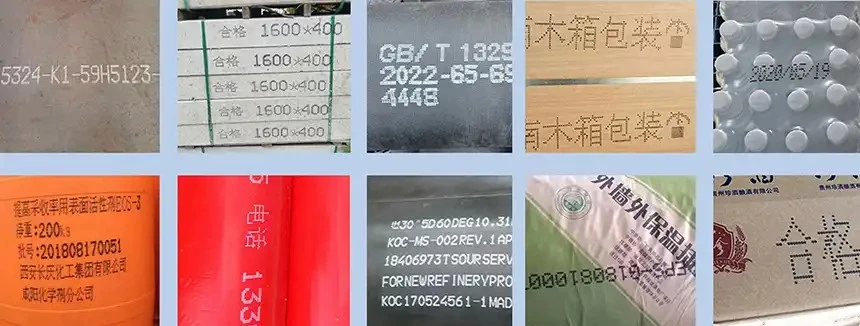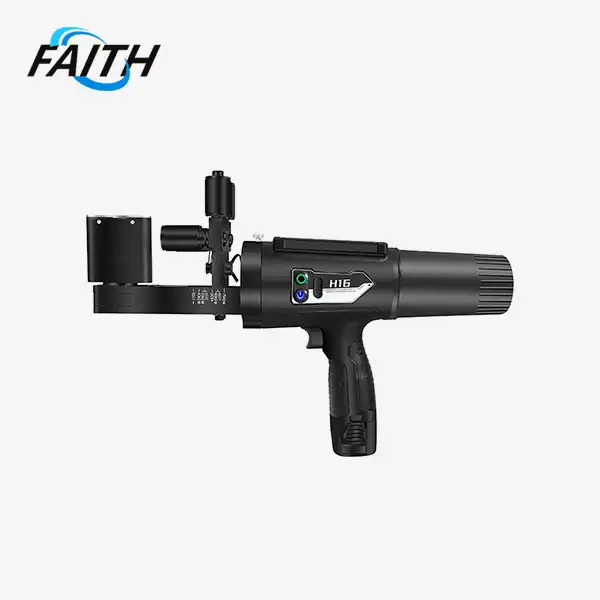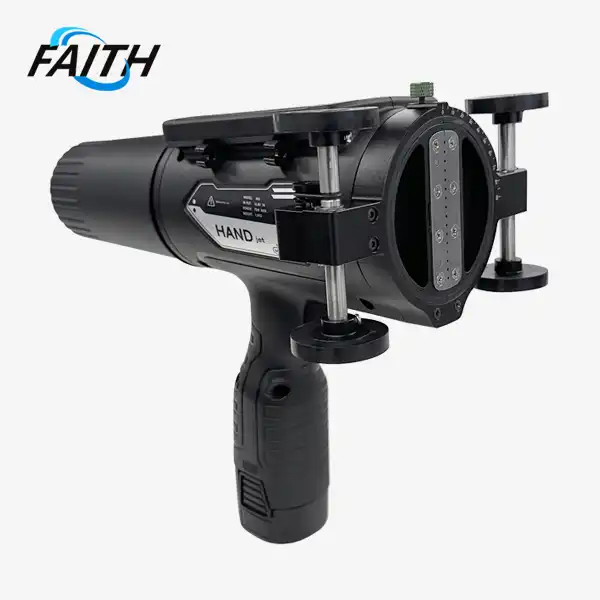How to Improve Metal Traceability with Industrial Inkjet Printers?
Improving metal traceability with industrial inkjet printers is a game-changing solution for manufacturers seeking enhanced quality control and supply chain management. By utilizing large character inkjet printer for printing metal, companies can achieve precise, durable, and easily readable markings directly on metal surfaces. These advanced printers offer high-resolution printing capabilities, allowing for clear barcodes, serial numbers, and other crucial tracking information to be applied efficiently. The implementation of industrial inkjet technology not only streamlines the traceability process but also significantly reduces errors, improves inventory management, and ensures compliance with industry regulations.

Introducing Large Character Inkjet Printers for Metal Printing
The Technology Behind Large Character Inkjet Printers
Large character inkjet printers represent a pinnacle of industrial marking technology. These robust machines are engineered to deliver high-quality, large-format prints on a variety of surfaces, including metal. The core technology relies on precise droplet placement, where tiny ink particles are propelled onto the substrate with remarkable accuracy. This process allows for the creation of clear, legible characters even on challenging metal surfaces.
The ink used in these printers is specially formulated to adhere to metal surfaces, ensuring longevity and resistance to environmental factors. Advanced formulations can withstand extreme temperatures, chemicals, and abrasion, making them ideal for industrial applications where durability is paramount.
Advantages of Using Large Character Inkjet Printers for Metal Traceability
Implementing large character inkjet printer for printing metal traceability offers numerous benefits:
- Versatility: These printers can handle a wide range of metal surfaces, from flat sheets to curved pipes.
- Speed: High-speed printing capabilities allow for rapid marking of metal components without slowing down production lines.
- Customization: Printing height is freely selectable between 10-60mm, accommodating various traceability needs.
- Multi-directional Printing: Font rotation options of 90, 180, and 270 degrees support printing from multiple angles.
- Cost-effectiveness: Compared to traditional engraving or etching methods, inkjet printing is more economical for large-scale operations.
Key Features to Look for in Metal Printing Solutions
When selecting a large character inkjet printer for metal traceability, consider these essential features:
- Print Resolution: High-quality printers offer resolutions that ensure crisp, clear markings even on small areas.
- Ink Compatibility: Look for faith printers that use inks specifically designed for metal adherence and durability.
- Print Head Technology: Advanced print heads provide better coverage and longevity, reducing maintenance needs.
- Integration Capabilities: Ensure the printer can seamlessly integrate with existing production lines and software systems.
- Environmental Resistance: Choose printers that can withstand industrial environments, including dust, humidity, and temperature fluctuations.
Implementing Metal Traceability Systems with Industrial Inkjet Printers
Designing an Effective Traceability Strategy
Implementing a robust metal traceability system begins with a well-designed strategy. This involves identifying critical tracking points throughout the manufacturing and supply chain process. Consider the following steps:
1. Assess Current Processes: Evaluate existing tracking methods and identify areas for improvement.
2. Define Traceability Goals: Determine what information needs to be tracked and why.
3. Choose Appropriate Marking Content: Decide on the type of information to be printed (e.g., serial numbers, barcodes, QR codes).
4. Select Optimal Printing Locations: Identify where on the metal components the markings will be most effective and durable.
5. Establish Data Management Protocols: Develop systems for collecting, storing, and retrieving traceability data.
Integrating Large Character Inkjet Printers into Production Lines
Seamless integration of large character inkjet printers into existing production lines is crucial for efficient metal traceability. Consider these integration aspects:
- Printer Placement: Position printers at strategic points along the production line for optimal marking without disrupting workflow.
- Synchronization: Ensure printer operations are synchronized with conveyor speeds and production rates.
- Data Connectivity: Set up robust connections between printers and central databases for real-time information updates.
- Quality Control Measures: Implement vision systems to verify print quality and readability immediately after marking.
- Maintenance Scheduling: Plan for regular maintenance to prevent downtime and ensure consistent print quality.
Training and Operational Best Practices
To maximize the benefits of large character inkjet printers for metal traceability, proper training and adherence to best practices are essential:
- Operator Training: Provide comprehensive training on printer operation, maintenance, and troubleshooting.
- Standard Operating Procedures (SOPs): Develop and implement clear SOPs for printer use and traceability processes.
- Regular Calibration: Establish routines for printer calibration to maintain print quality and accuracy.
- Ink Management: Implement proper ink storage and handling procedures to ensure optimal performance and longevity.
- Data Verification: Regularly audit traceability data to ensure accuracy and completeness.
Optimizing Metal Traceability for Industry-Specific Applications
Aerospace and Defense: Precision Tracking for Critical Components
In the aerospace and defense sectors, metal traceability is not just a convenience—it's a critical safety and regulatory requirement. Large character inkjet printers play a vital role in this industry by enabling:
- Part Authentication: Unique identifiers printed directly on metal components help prevent counterfeit parts from entering the supply chain.
- Lifecycle Tracking: From manufacture to maintenance, every interaction with a component can be logged and traced.
- Compliance Documentation: Easily generate and maintain records for regulatory compliance and audits.
- Rapid Recall Management: In the event of a defect, quickly identify and locate affected parts across the supply chain.
Automotive Manufacturing: Streamlining Production and Quality Control
The automotive industry benefits significantly from advanced metal traceability systems. Large character inkjet printer for printing metal contribute to:
- Assembly Line Efficiency: Clear markings on metal parts facilitate automated sorting and assembly processes.
- Quality Assurance: Trace components through each production stage to pinpoint and address quality issues promptly.
- Warranty Management: Accurately track parts from production to end-user, simplifying warranty claims and recalls.
- Supply Chain Optimization: Improve inventory management and reduce waste through precise component tracking.
Heavy Machinery: Enhancing Maintenance and Asset Management
For heavy machinery manufacturers and operators, metal traceability is crucial for effective asset management:
- Preventive Maintenance: Track usage and wear of individual components to schedule timely maintenance.
- Parts Inventory: Efficiently manage spare parts inventory based on accurate usage and failure rate data.
- Equipment Longevity: Extend machinery lifespan through data-driven maintenance and part replacement strategies.
- Performance Optimization: Analyze component performance data to inform design improvements and upgrades.
FAQ
Q: Can large character inkjet printers work on all types of metal surfaces?
A: While these printers are versatile, surface preparation may be necessary for optimal adhesion on certain metals.
Q: How durable are the prints on metal surfaces?
A: With specialized inks, prints can last for years, resisting fading, chemicals, and abrasion.
Q: Is it possible to integrate these printers with existing ERP systems?
A: Yes, many modern large character inkjet printers offer integration capabilities with various ERP and MES systems.
Conclusion
Implementing large character inkjet printer for printing metal traceability represents a significant leap forward in manufacturing efficiency and quality control. By leveraging this technology, industries can achieve unprecedented levels of accuracy in tracking metal components throughout their lifecycle. The benefits extend far beyond simple identification, encompassing improved supply chain management, enhanced quality assurance, and streamlined compliance processes.
As industries continue to evolve, the role of advanced traceability solutions will only grow in importance. For those looking to stay ahead in the competitive landscape of metal manufacturing and processing, adopting these innovative printing solutions is not just an option—it's a necessity for future success. To explore how large character inkjet printers can revolutionize your metal traceability processes, contact us at sale01@sy-faith.com for personalized guidance and solutions.

References
1. Johnson, M. E. (2021). "Advanced Metal Traceability Systems in Manufacturing: A Comprehensive Review." Journal of Industrial Engineering and Management, 14(3), 512-530.
2. Smith, A. R., & Brown, L. K. (2020). "Implementing Large Character Inkjet Printers for Enhanced Metal Component Tracking." International Journal of Production Research, 58(12), 3756-3771.
3. Chen, X., Wang, Y., & Liu, Z. (2022). "Industrial Inkjet Printing Technologies for Metal Surface Marking: Current Status and Future Prospects." Surface and Coatings Technology, 432, 128076.
4. Thompson, R. D., & Garcia, E. M. (2019). "Optimizing Metal Traceability in Aerospace Manufacturing: A Case Study Approach." Aerospace Science and Technology, 89, 352-365.
5. Lee, S. H., Kim, J. W., & Park, H. S. (2023). "Integration of Large Character Inkjet Printers in Smart Manufacturing Ecosystems for Enhanced Metal Component Traceability." Robotics and Computer-Integrated Manufacturing, 80, 102481.
Online Message
Learn about our latest products and discounts through SMS or email
_1754992770333.jpg)


